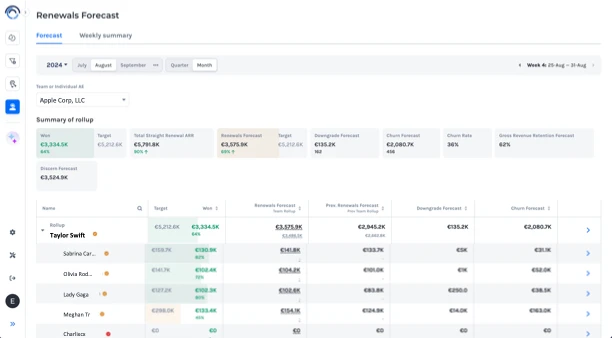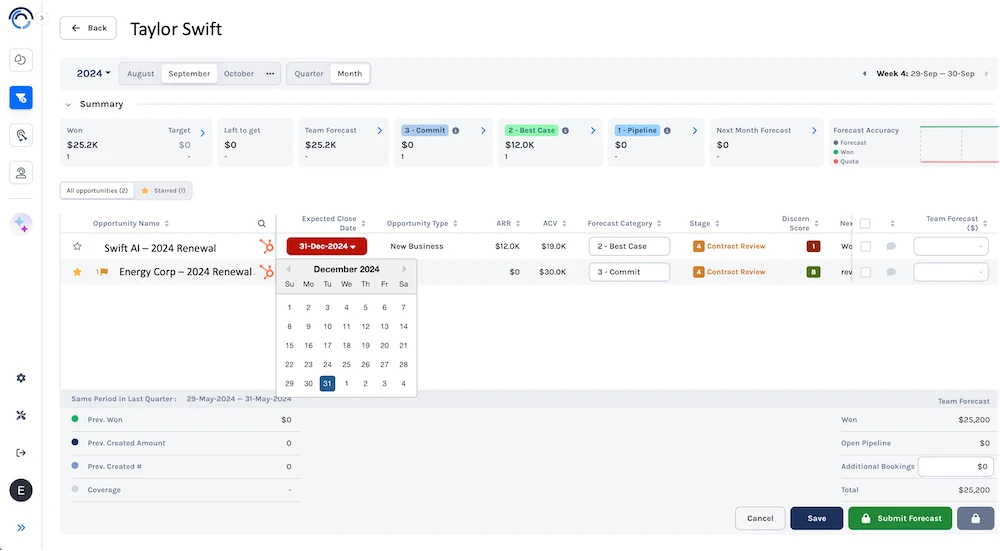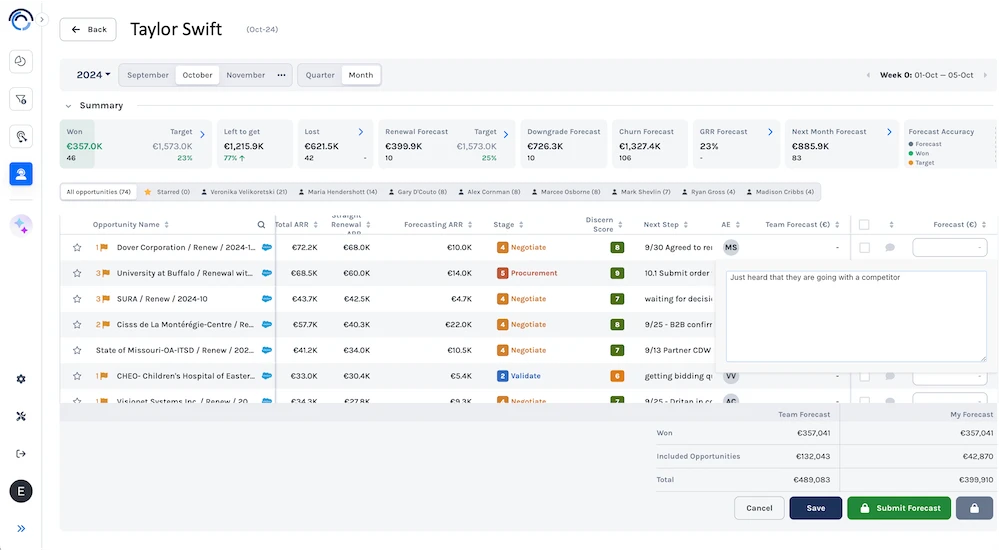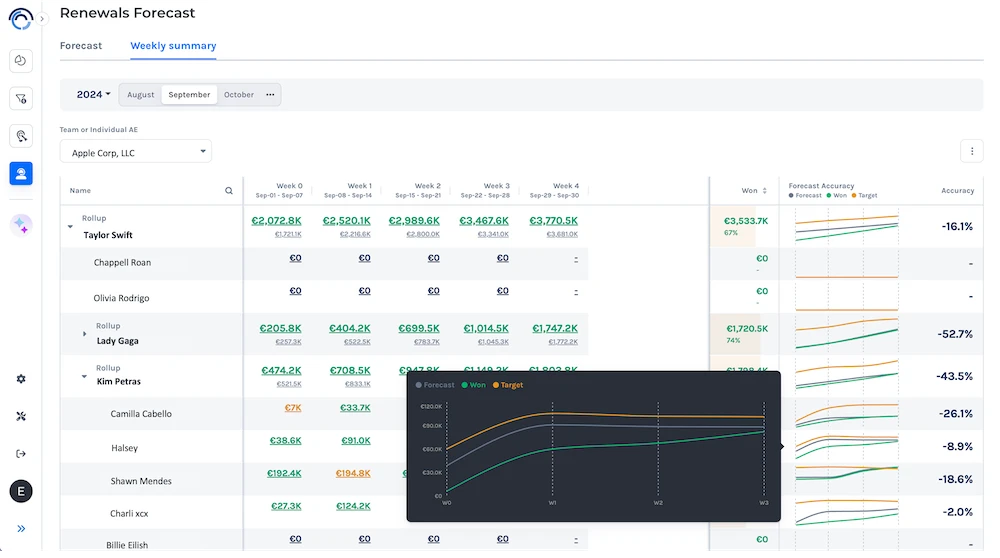Helping Global CS teams predict and prevent churn
Let’s Treat Customer Renewals Like New Sales.
In SaaS, treating renewals with the same strategic focus as new sales is becoming increasingly important. It’s no secret that expanding footprint with existing customers is significantly more cost-effective than acquiring new ones. And customer churn can have devastating long term impacts on company health and valuations.
By adopting a sales-like approach to renewals, SaaS businesses can better forecast future revenue, offering finance teams a clearer picture of what’s ahead.
Discern’s Renewals Forecast tool was designed to address this exact need. By enabling customer success managers to view their own book of business by renewal date and facilitating a workflow to forecast renewal opportunities, Discern helps Customer Success teams stay on top of each renewal opportunity with a standardized process.
As a result, Discern provides an accurate view into churn predictions and helps CS teams improve the overall customer experience.
Optimize Customer Operations
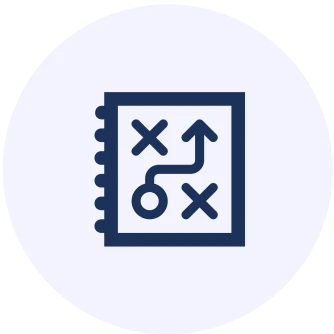
Mitigate High Risk Customers
By identifying at risk customers during the forecast process, Discern makes it easy for customer success organizations to rally and deploy risk mitigation strategies.
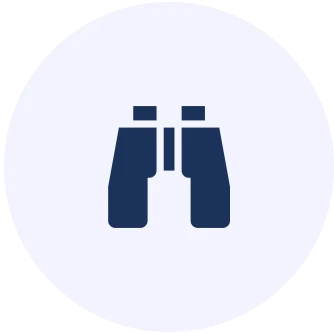
Plan With Confidence
Predicting customer churn has never been easier. Align the entire business on a forecast based on both seen and unseen data points from the account manager’s perspective.
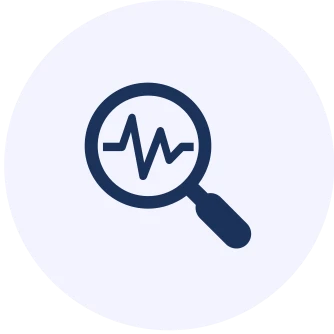
Improve Data Hygiene
Enable reps to update relevant opportunity fields directly from Discern as they go through the forecast process.
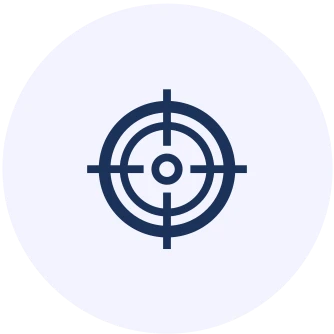
Continuous Improvement
Score each CS rep on their forecast accuracy, and coach them to improve future predictions.
Discern FAQs
The subscription fee for Discern’s Renewals Forecast solution is $300 per customer success representative per year. There is also a 1-time implementation fee. To learn more about the total cost for your business, book a meeting with Discern’s Sales consultants here.
Yes! Discern pulls relevant customer, renewals and subscription data from all of your key data sources: Billing systems, CRM, or even your own product.
The implementations for our Customer Renewals Forecasting app typically take 1-2 days once we have access to your relevant systems. During this time, we will configure the system to include the right data that’s relevant for your business.
Yes! Discern is data source agnostic, so we can pull in other relevant data points such as health scores, customer feedback (NPS, CSAT) or product engagement data.
We will just add in the score as an additional column in the customer data table so you have all the relevant data needed to call a renewal opportunity with confidence.
Want to run a tight renewals process and accurately predict churn?
Book a demo with Discern’s experts and see how Discern can enable your CS and renewals reps to improve the customer journey.
Industry FAQs
Predicting when a customer will churn is all about spotting the signs before it’s too late. This involves digging into various data points like customer behavior, engagement metrics, usage patterns, and feedback from customer interactions.
By analyzing historical data, we can identify trends that might indicate a customer is about to leave. This is where predictive models come into play—they use machine learning to process complex datasets and highlight at-risk customers. By anticipating customer churn early on, businesses can take proactive steps to improve customer satisfaction and retention, keeping more customers happy.
Going through a weekly renewal forecasting process enables your customer success and renewals reps to work together to evaluate customer health and deploy risk mitigation strategies as needed. This helps you improve satisfaction well ahead of the renewal date.
Choosing the model for predicting churn depends on your specific business needs and the data you have available. There are several predictive model options out there, from logistic regression and decision trees to more advanced machine learning models like random forests and neural networks. These models analyze a wide range of data points—such as product usage, engagement, and feedback—to predict customer churn.
Often, a combination of different models, tailored to your customer base and market conditions, can offer the most accurate predictions. It’s about finding the right fit that balances accuracy with cost-effectiveness for your business. Building a churn prediction model can be an intricate process that requires the help of data scientists to apply bespoke machine learning algorithms based on your favorite churn prediction models.
Calculating churn is pretty straightforward. You take the number of customers who stopped using your product or service during a specific period and divide that by the total number of customers you had at the start of that period. This gives you a clear picture of how well you’re retaining existing customers.
A precise churn calculation helps the CS team understand the effectiveness of their strategies and spot areas where they might need to step in and prevent churn. It’s an essential metric for any SaaS company aiming to keep customers satisfied.
For an even deeper understanding of churn and its calculation, check out our SaaS metrics library.
A good churn rate can vary depending on the industry and type of business, but generally, for SaaS companies, anything below 5% per month is considered good. This indicates that most of your customers are sticking around and finding value in your product or service.
The key is to aim for a number that supports your long-term revenue growth by balancing new customer acquisition costs with the benefits of retaining existing customers.
Forecasting churn in SaaS involves analyzing customer data and engagement metrics over time to spot trends. Many SaaS companies use machine learning models to predict future churn based on historical data, customer interactions, and other key indicators. These models look at various factors, like customer satisfaction, product usage, and feedback, to identify at risk accounts.
By keeping these models up to date with fresh data, companies can make more accurate predictions and fine-tune their retention strategies. This helps maintain a healthy customer base and optimize customer retention for the long haul.
Tools like Discern make it easy for to predict churn, accurate forecast renewals, and analyze how the forecast evolves each week in the quarter. These capabilities help SaaS companies improve revenue forecasting accuracy and customer success habits over time.
The terms “renewal quoted” and “renewal forecast” might sound similar, but they serve different purposes. Renewal quoted refers to the amount a customer is expected to pay when they renew their subscription, based on their current contract terms.
On the other hand, a renewal forecast is more of an estimate—an educated guess about how much revenue you expect to bring in from customer renewals, considering factors like customer activities, past renewal rates, and overall satisfaction. Knowing the difference between these two can help you better manage the customer renewal process and predict your revenue more accurately.
Calculating renewal rate is quite simple. You take the number of customers who renew their subscription at the end of a period and divide it by the total number of customers who were up for renewal. This metric is vital for understanding how effective your customer retention efforts are.
A high renewal rate often means your customers are happy and see continued value in your product or service. By keeping an eye on this rate, you can identify trends and tweak your customer engagement strategies to improve customer satisfaction and maximize revenue growth.
Net Revenue Retention (NRR) is a key metric that shows how much recurring revenue you’re keeping from your existing customers over a certain period, after accounting for upgrades, downgrades, and cancellations.
To calculate NRR, you divide the total revenue from your existing customers at the end of a period (including any additional revenue from upgrades) by the total revenue from those customers at the start of the period. Check out NRR in our SaaS metrics library for a more comprehensive understanding of this key metric.
A good NRR for SaaS companies is typically above 100%. This means that, on average, your existing customers are spending more, thanks to upsells or expanded usage, even after accounting for any losses due to churn or downgrades.
Top-performing SaaS companies often achieve NRR rates of 120% or higher, reflecting strong customer engagement and satisfaction, however NRR benchmarks are always evolving.
Sales forecast and revenue forecast are terms that are often used interchangeably, but they have distinct meanings. A sales forecast is an estimate of the number of sales or new customers you expect to acquire over a certain period. It focuses more on volume and customer acquisition. On the other hand, a revenue forecast provides a broader picture, estimating the total income you expect to generate, including sales to new customers and recurring revenue from established customers. Revenue forecasts also take into account factors like churn, customer behavior, and economic conditions, offering a more comprehensive view of your company’s financial outlook. Understanding both is crucial for effective business planning and strategy.
Check out Discern’s Sales Forecasting tool to learn more about how we can help streamline your bookings forecasting process and increase sales forecast accuracy.
